North Carolina Division 1 Football Stadiums by Capacity
10. Whitmire Stadium (13,742)

Whitmire Stadium, home of Western Carolina University’s football team, has a capacity of 13,742 and ranks 10th in North Carolina stadiums. The stadium, which first opened in 1974, originally had a capacity of 12,000. Since the 2003 season, the facility has continued to make improvements. For example, it added additional team meeting space, visiting locker rooms, a hospitality patio, and doubled the original weight room in the Jordan-Phillips Field House.
9. Jerry Richardson Stadium (15,314)

Jerry Richardson Stadium, the football stadium for UNC Charlotte’s 49ers, has a capacity of 15,314. It wasn’t until 2008 that UNC Charlotte approved the addition of a football team. Consequently, construction began in 2010 and the stadium was completed in 2013, with the team playing their first full season that fall. Recently, in April 2024, UNC Charlotte approved a $60 million stadium expansion, and construction will begin after the conclusion of the 2024 season.
8. Bowman Gray Stadium (17,000)
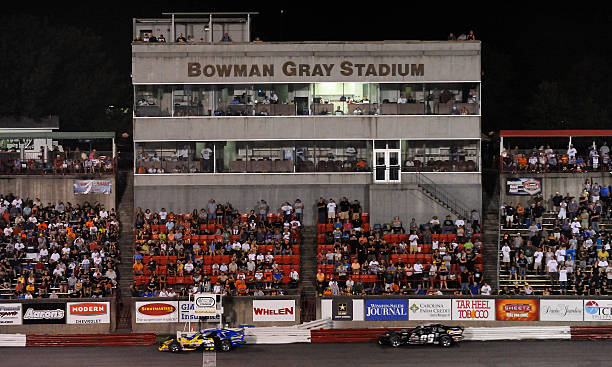
Bowman Gray Stadium, home of the Winston-Salem State Rams, has a capacity of 17,000. Built in 1937, Bowman Gray Stadium was shared with Wake Forest University’s college football team from 1956 to 1967. Additionally, it shared the space with two high schools, Parkland, and R.J. Reynolds, until they built their facilities in 1994. The stadium was also used for the NASCAR Grand National from 1958 to 1971. The 1953 expansion from the original 10,000-seat capacity to the current 17,000 capacity occurred because racing had become extremely popular at the facility.
7. Truist Stadium (21,500)

Trust Stadium, the multi-purpose college football stadium for NC A&T State University, has a capacity of 21,500. Formerly known as Aggie Stadium, it opened in 1981, playing its first game against rival Winston Salem State University. The original stadium called for a 20,000-seat capacity but because of increased material costs, the plan scaled back to 17,500. The record attendance was 34,769 in 2001, two years before the final expansion.
6. Allegacy Federal Credit Union Stadium (31,500)
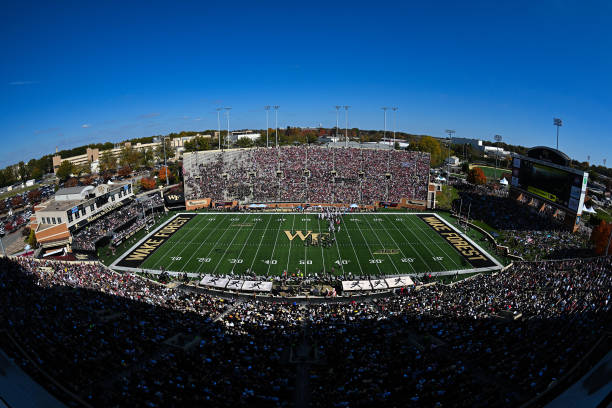
Allegacy Stadium, home of the Wake Forest Demon Deacons, has a capacity of 31,500 landing it sixth on the list of football stadiums. Since 2000, the facility has had five names, most recently changed from Truist Field at Wake Forest to Allegacy Federal Credit Union Stadium in 2023. The original name, Groves Field, was named after Henry Froces who financed the stadium when it relocated to Winston Salem. The stadium opened in September 1968 and the Deacons lost to NC State.
5. Wallace Wade Stadium (40,004)
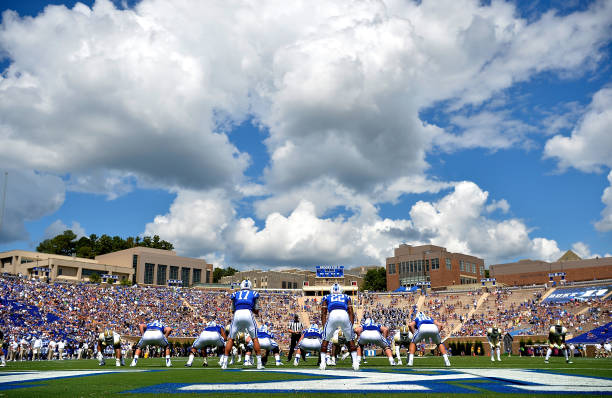
Wallace Wade Stadium, the football stadium for Duke University, opened 95 years ago and was originally named Duke Stadium. The stadium was renamed in 1967 after former head coach Wallace Wade. The capacity expanded to 40,004 seats in 2016. The Blue Devil Tower opened in 2016 and holds 516 club seats and 21 suites. On April 24th, 1971, The Grateful Dead performed on the field as a part of Joe College Weekend, a spring festival held between the 1950s and 1970s.
4. Kidd Brewer Stadium (40,168)
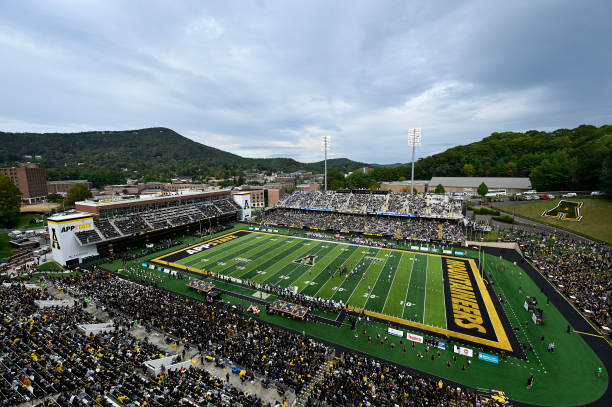
Kidd Brewer Stadium, the football stadium for Appalachian State University, has a capacity of 40,168 as of 2022. The stadium officially opened in 1962 as Conrad Stadium and had a capacity of only 10,000. In 1970, it became the first venue in the Carolinas to have artificial turf. In 1970, artificial turf was It has gone through 8 expansions, with 6 expansions since 2006. The highest record for attendance at Kidd Brewer Stadium was 40,168 against East Carolina on September 16th, 2023.
3. Kenan Memorial Stadium (50,500)
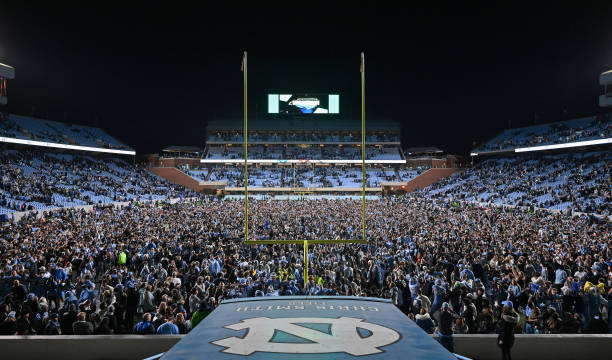
Kenan Memorial Stadium, home of the Tar Heels, is located in Chapel Hill. Kenan Stadium opened in 1927 and has a capacity of 50,500. The stadium’s first game was on November 12th, 1927 where the Tar Heels beat the Davidson Wildcats 27-0. The original facility, Emerson Field, had been the football team’s base since 1916 and only sat 2,400 people. When the school played their rival Virginia in 1925, 16,000 fans stood on the sidelines which led to uproar as fans refused to go to any more football games until the school expanded their facility.
2. Dowdy-Ficklen Stadium (52,000)
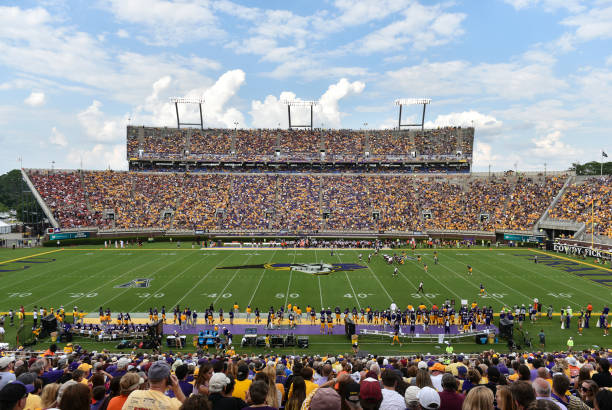
Dowdy-Ficklen Stadium, the college football stadium for the East Carolina Pirates, holds 52,000 seats. The original, College Stadium, replaced the originally named Ficklen Memorial Stadium, now known as Dowdy-Ficklen Stadium. The original capacity in 1963 was 10,000 and didn’t expand to the current capacity until 2019 with the opening of TowneBank Tower. In total, there were 5 expansions since 1967.
1. Carter-Finley Stadium (56,919)
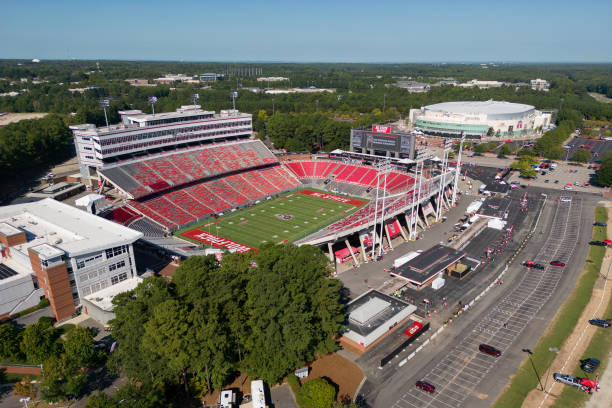
Carter-Finley Stadium, home of the NC State Wolfpack, is located in Raleigh and is the largest of the football stadiums. The current stadium opened in 1966 after the original stadium, Riddick Stadium, was beginning to decline. With this update, the stadium capacity increased from 23,000 seats to 56,919 seats. Harry C. and Wilbert J. Originally named ‘Carter Stadium’ in honor of the Carter family, the name was later changed to ‘Carter-Finley Stadium’ to also honor Albert E. Finley. The Raleigh-Durham Skyhawks, a WLAF team, played at Carter-Finley for one year in 1991.


